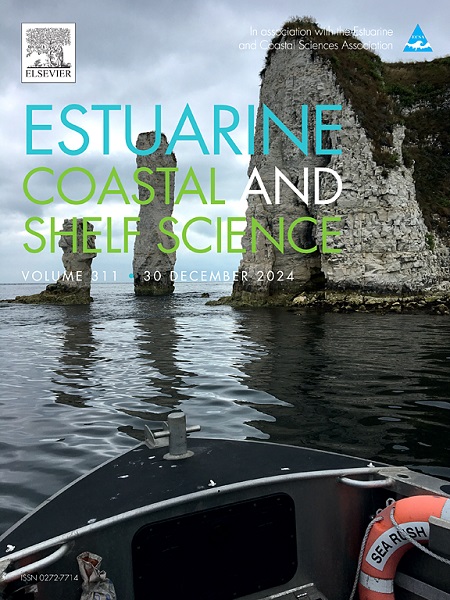胃内容物分析:阿根廷海狮饮食研究中不同采样来源的比较
IF 2.6
3区 地球科学
Q1 MARINE & FRESHWATER BIOLOGY
引用次数: 0
摘要
南美洲海狮Otaria flavescens已被证明是海洋生物多样性的优秀生物样本,因为通过对其饮食的检查,可以确定巴塔哥尼亚北部生态系统中海洋资源的分布和丰富程度。有不同的方法来分析鳍足类动物的饮食,如利用粪便、胃内容物、脂肪酸和稳定同位素。本研究的目的是根据不同的采样来源(1-在海岸发现的死亡动物的胃内容物,2-自然反流和3-先前麻醉个体的胃灌洗)比较胃内容物分析所获得的信息类型。2005年至2022年间,在Punta Bermeja(41°09'S, 63°05 ' W)、Promontorio bel本文章由计算机程序翻译,如有差异,请以英文原文为准。

Stomach content analysis: Comparison amongst different sources of sampling in the study of the diet of sea lions in Argentina
The South American sea lion, Otaria flavescens, has proven to be an excellent biological sampler of the marine biodiversity since it is possible, through the examination of its diet, to determinate the distribution and abundance of marine resources in the northern Patagonian ecosystem. There are different methods to analyze the diet of pinnipeds, such as the use of scats, stomach contents, fatty acids and stable isotopes. The aim of the present study was to compare the type of information obtained from stomach contents analysis according to different sources of sampling (1- stomach contents from animals found dead on the coast, 2- natural regurgitations and 3- stomach lavage of previously anesthetized individuals). Between 2005 and 2022 a total of 48 stomach contents of O. flavescens were obtained at the sea lions rookeries of Punta Bermeja (41°09′S, 63°05′ W), Promontorio Belén (41° 09′S; 63° 48′W) and Caleta de los Loros (41°02′ S 64°10′ W) (San Matías gulf, Argentina). These three sources of sampling provided different dietary information. Stomach contents from dead animals presented more diverse prey than those coming from the two other sources. Overall, the fish species Raneya brasiliensis was the main prey item found, followed by cephalopods and crustaceans, coinciding with previous dietary reports based on scat analysis. The results obtained suggest that scat analysis is still the most appropriate method for monitoring the diet of sea lions on a temporal and spatial basis, being stomach content analysis a good complementary source of information.
求助全文
通过发布文献求助,成功后即可免费获取论文全文。
去求助
来源期刊
CiteScore
5.60
自引率
7.10%
发文量
374
审稿时长
9 months
期刊介绍:
Estuarine, Coastal and Shelf Science is an international multidisciplinary journal devoted to the analysis of saline water phenomena ranging from the outer edge of the continental shelf to the upper limits of the tidal zone. The journal provides a unique forum, unifying the multidisciplinary approaches to the study of the oceanography of estuaries, coastal zones, and continental shelf seas. It features original research papers, review papers and short communications treating such disciplines as zoology, botany, geology, sedimentology, physical oceanography.

 求助内容:
求助内容: 应助结果提醒方式:
应助结果提醒方式:


